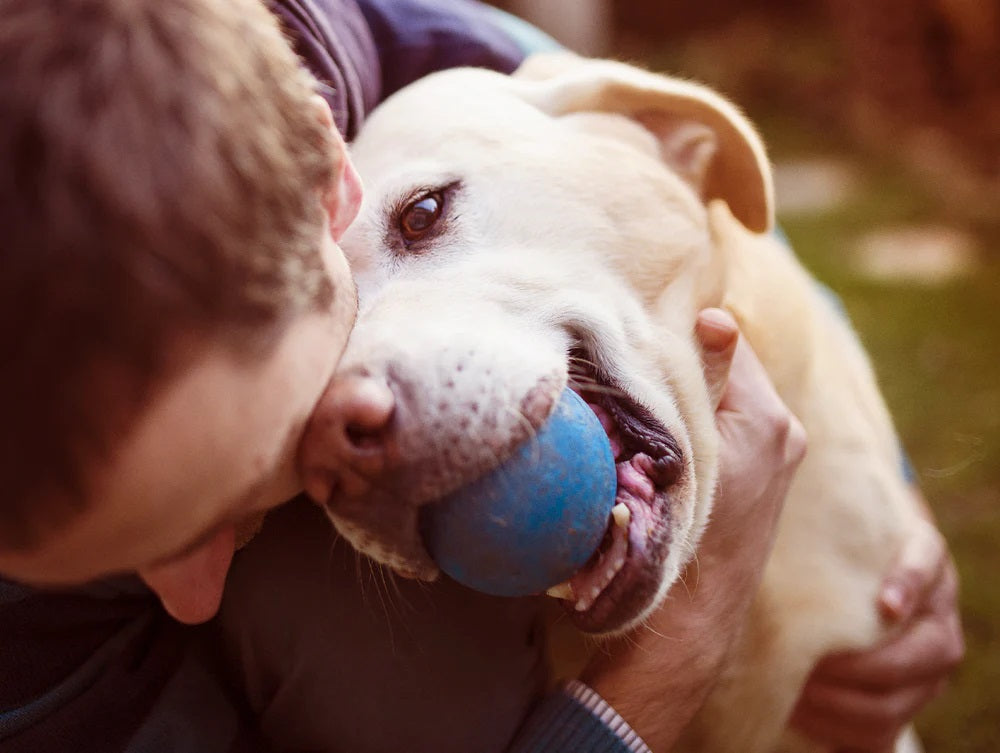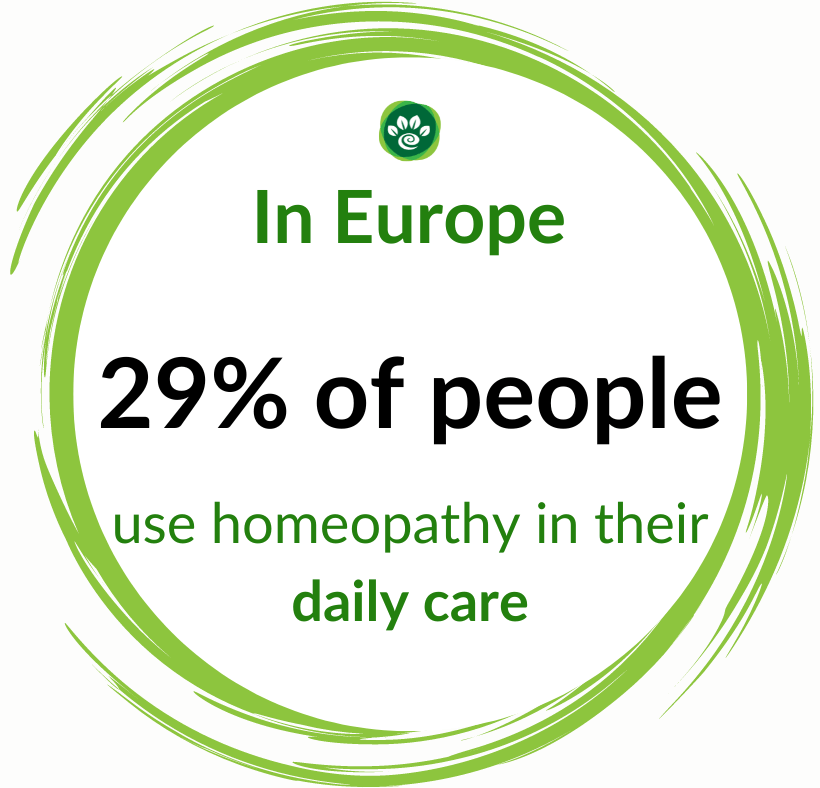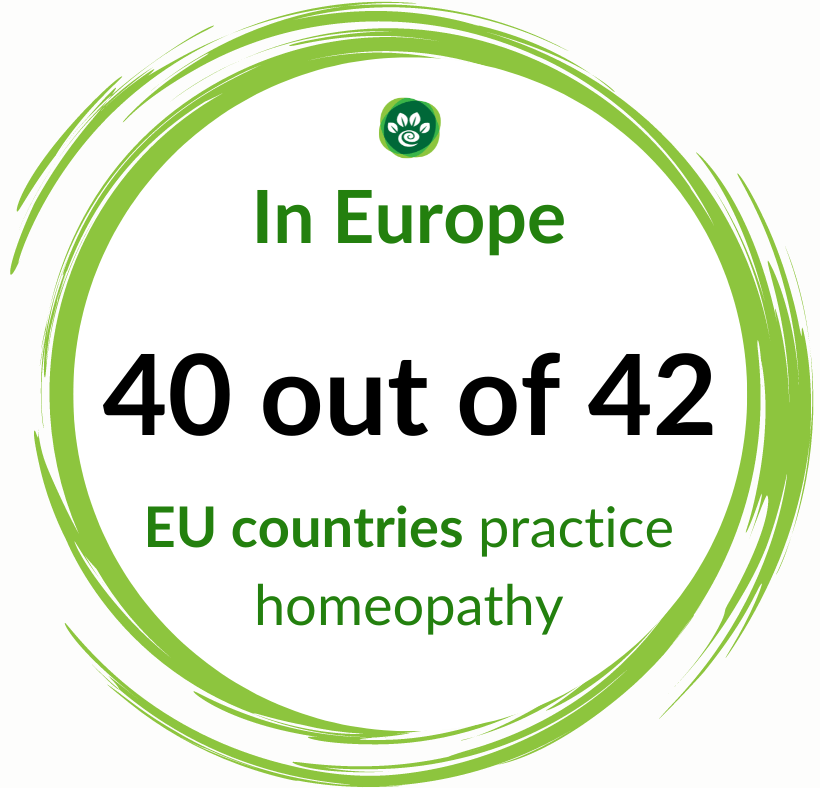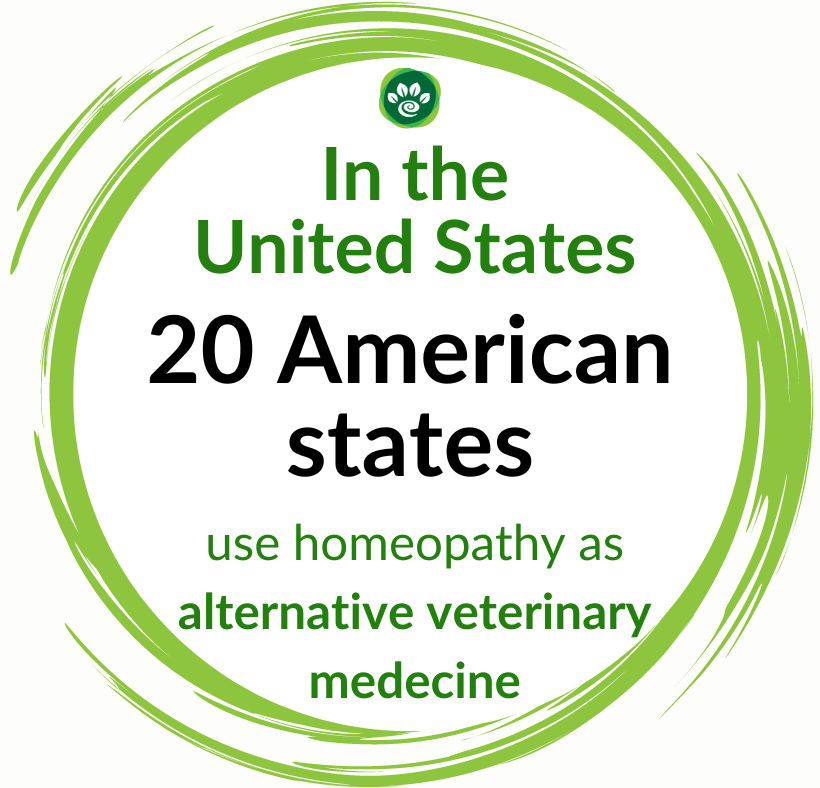
Does Your Dog Have a Corneal Ulcer? Here Are the 8 Best Natural Remedies to Use
The eyes are arguably one of your dog's most important organs. In addition to allowing your sweet pooch to perceive his surroundings, they are essential in helping him avoid danger and risky situations.
However, health problems such as corneal ulcers can have adverse effects on your canine companion's vision.
Since corneal ulcers in dogs can even progress to blindness, it is essential that this health problem is treated promptly, providing your pet with the necessary care and attention.
As we read on, we'll share with you the best information we've found from our research on the 8 best natural remedies that will help you properly treat corneal ulcers in dogs. Let's start by finding out exactly what a corneal ulcer is.
What is a corneal ulcer in dogs?
A canine corneal ulcer, or ulcerative keratitis in dogs as it is technically known, occurs when there is an abrasion to the surface of the eye, also called the cornea. This abrasion, which creates a hollow in the corneal area, can be superficial or deep, and its severity also depends on the extent of the damage.
There are three (3) layers of the cornea that can be affected by said abrasion.
These are the epithelium, which acts as the outer covering of the cornea; the stroma, which is the main supporting tissue of the cornea; and Descemet's membrane, a thick basement membrane that serves as both a protective barrier and a conduit for macromolecules and nutrients.
It can be deduced that the deeper the scraping inflicted on the cornea, the more serious the adverse effects of the ulcer will be.
Additionally, while all dogs can be prone to this health problem, it is more common in brachycephalic (flat-faced) breeds such as Shih Tzus, Bulldogs, Boxers, Pekingese, Boston Terriers, and Pugs.
Now that we have an overview of what corneal ulcers in dogs are, let's look at the causes that can trigger this health problem.
How does a dog develop a corneal ulcer?
There are four (4) common causes of corneal ulcers in dogs, namely physical trauma, chemical irritation, infections, and specific diseases. Let's discuss each of these causes in more detail.
Physical trauma
Physical trauma is considered the most common cause of corneal ulcers in dogs. This refers to anything that causes bodily injury to your pet, also resulting in damage to the eyes, particularly the cornea.
There are basically two (2) types of physical trauma that can trigger corneal ulcers in dogs.
The first is blunt force trauma, which occurs when something hard or rigid comes into contact with the eyes, such as when your dog bumps into a wooden chair or wall, and their eyes take the brunt of the impact.
On the other hand, the second is penetrating trauma, which is characterized by the piercing of the skin, muscles, and tissues around and within the eye area, resulting in open wounds. A common example of this type of trauma is a scratch or cut to the eye.
Interestingly, corneal ulcers in dogs can also be triggered by physical trauma to the eye caused by generally harmless objects found in the dog's environment. These can include small pebbles, blades of grass, and tiny pieces of tree bark.
Chemical irritations
This cause of corneal ulcers is attributed to harsh chemicals or substances that you may have in your home or around you. When these chemicals or substances get trapped in your dog's eyes, they tend to produce a burning effect that can cause damage or abrasions to the cornea.
These chemicals or products include nail polish remover, drywall dust, vinegar, window polish, ammonia, bleach, oven cleaners, and some deep cleaning detergents and shampoos.
This also serves as a reminder why you should always opt for dog-specific soaps and shampoos when purchasing hygiene products for your domestic companion.
Infections
Whether caused by bacteria, viruses, or parasites, infections are typically characterized by inflammation and swelling. When these infections affect the area around and inside a dog's eyes, there's a good chance their cornea will also be affected, which can eventually lead to an ulcer.
Some key examples you should be aware of include ehrlichiosis or tick fever, Lyme disease, conjunctivitis or pink eye, canine influenza, and leptospirosis.
Specific diseases
Certain specific diseases can directly cause corneal ulcers in dogs or increase their risk of developing this health problem. These diseases include hypothyroidism, diabetes, keratoconjunctivitis sicca or "colored eye," and epithelial dystrophy.
Now let's talk about the indicators of corneal ulcers in dogs that you should watch out for.
Corneal Ulcer Symptoms to Watch For in Dogs
I've listed these symptoms from mildest to most severe, so you can get an idea of how this health problem tends to progress:
- Tendency to hide
- Lack of interest in the game
- Excessive crying and moaning
- Constant touching of the affected eye
- Excessive blinking
- Rubbing the face on hard surfaces, such as the floor
- Redness of the affected eye (possibly accompanied by some swelling)
- Constant tearing, either only in the affected eye or in both eyes.
- Loss of appetite
- Eye closed most of the time.
- Discharge from the affected eye (possibly bloody).
If you notice any of these symptoms of corneal ulcers, administer appropriate care immediately to avoid worsening this health problem in your canine companion.
Speaking of treating this problem immediately and properly, here are the best natural remedies to use.
How to treat corneal ulcers in dogs?
Make a cooling eye patch with eyebright.
According to a study published by the National Center for Biotechnology Information (NCBI) , experiments show that extracts collected from eyebright "generally decrease levels of pro-inflammatory cytokines," which helps control inflammation.
To use eyebright, boil the leaves, stems, and flowers of this herbaceous plant in water for at least ten (10) minutes, or until the liquid turns a light brown color. Allow the liquid to cool completely and divide it into small but sufficient portions.
Take a single portion of cooled eyebright tea and soak a clean piece of cloth in the liquid. Gently place the cloth over the affected eye. Repeat this process for a few minutes and discard the used eyebright tea. Be sure to use a fresh batch for the next application.
It is important to note that this procedure works best during the early stages of corneal ulcer.
Feed your dog foods rich in astaxanthin.
Another NCBI study reports that astaxanthin may produce "significant improvement in the outcomes of various eye diseases, including diabetic retinopathy, age-related macular degeneration, glaucoma, and cataracts."
The study's sponsors even point out that astaxanthin has a "potential role in eye health."
To reap the benefits of astaxanthin in treating corneal ulcers in dogs, be sure to include safe foods rich in this antioxidant and keto-carotenoid in your dog's regular meals. Red trout and salmon are good examples.
However, it is essential to keep in mind that you should only serve these oily fish cooked plain, without any added seasoning or flavoring.
In addition to making sure to remove bones that can pose a choking hazard, you should never give raw red trout and salmon to your four-legged friend, as this could expose them to toxins and contaminants that can lead to illnesses such as salmon poisoning (SPD).
Make a green tea compress for your eyes.
BMC reveals that green tea contains a large amount of health-promoting polyphenols. These have been observed to have not only anti-inflammatory properties, but also "antibacterial, antiangiogenic, antioxidant, antiviral, neuroprotective, and cholesterol-lowering effects."
This makes green tea a complete natural remedy to support your dog with a corneal ulcer.
To use green tea, gently place used (and completely cooled) green tea bags over the affected eye. Hold them in place for a few minutes. This method works best when your pup is lying down or resting.
A warm compress is always effective.
Another study published in the NCBI shows that warm compresses have a beneficial effect on eye health problems such as blepharitis, or eyelid inflammation. Since inflammation is one of the main triggers of corneal ulcers in dogs, using such a product could help prevent them from worsening.
To use a warm compress, soak a clean piece of cloth or a small towel in warm water and wring out the excess. Gently place the warm compress on the affected eye and hold it in place for at least five minutes.
Make lutein a regular part of his diet.
The NCBI points out that several studies show that regular consumption of large amounts of lutein, an antioxidant, "has beneficial effects on eye diseases, preventing or even improving age-related macular degeneration (AMD) and cataracts."
Lutein is abundant in several dog-safe foods, such as curly parsley, bell peppers, lettuce, and eggs.
To reap the benefits of lutein, include foods rich in this antioxidant (but first check if they are completely safe for your dog) in your canine companion's regular diet.
Remember to add only one teaspoon of these lutein-rich foods to avoid gastric upsets and other similar problems.
Kill bacteria and contaminants with saline solution.
According to Medical News Today, saline solution is one of the simplest yet powerful antibacterial options you can use to get rid of contaminants. In addition to helping remove debris and dead skin cells, this simple natural remedy can also eliminate excess mucus, which commonly occurs during inflammation.
To make your own saline solution, simply combine one cup of water previously boiled for at least twenty (20) minutes and one teaspoon of rock salt or another form of non-iodized salt.
However, it is not recommended to use sea salt for this application, as the minerals it contains can cause further irritation to the affected eye. You can also opt for kosher salt and pickling salt.
Stir the mixture until all the salt crystals are dissolved. Allow it to cool completely before applying a small amount to the affected eye to irrigate it. You can also use a dropper for this application.
Honey will help your dog gently soothe his corneal ulcer.
As reported by the NCBI, honey not only has an antibacterial effect, but it also helps "prevent corneal caking caused by infection," particularly in cases of keratitis (inflammation of the cornea) and blepharitis (inflammation of the eyelid margin), making it a good natural remedy for corneal ulcers in dogs.
However, it is crucial to emphasize that it is not recommended to put honey directly into the eye. To use honey, boil a cup of water and add three (3) teaspoons of this sweet substance. Stir gently until the mixture reaches a slightly thick consistency.
Allow the mixture to cool completely. You can now apply it to your dog's affected eye as an irrigation or as a regular eye drop.
Castor oil helps strengthen the strength of the eye surface.
The National Library of Medicine states that castor oil contains ricinoleic acid, which helps "increase the thickness of the tear film lipid layer" and its stability when applied topically to the eyes. Studies also show that castor oil has "strong antimicrobial, anti-inflammatory, antinociceptive, analgesic, antioxidant, wound healing, and vasoconstrictive properties."
To use castor oil, apply it to the affected eye using a dropper. Be sure to use only one drop at a time.
Now let's talk about a high-quality natural product that you should know about when it comes to treating corneal ulcers in dogs.
A high-quality natural product that you might want to include in your health checklist.
HomeoAnimo's CORNEA (ULCER) helps promote the health of your canine companion's cornea and eyes. It is also designed to prevent pus formation during inflammation and to relieve excessive eye sensitivity.
In addition to being made from high-quality natural ingredients, CORNEA (ULCER) also uses a gentle, holistic approach to ensure your dog's safety and well-being during administration.
To use CORNEA (ULCER) , shake the product well and spray a single spray into your beloved pooch's mouth. You can also spray it directly into their water. Stop administering this product as soon as symptoms disappear.
Now let's talk about how to clean your dog's affected eye when he has a corneal ulcer.
How to clean the affected eye
Contrary to popular belief, cleaning a dog's affected eye with a corneal ulcer isn't that complicated. Here are the steps to follow:
- Prepare some saline solution, two (2) clean pieces of cloth, two (2) deep containers or bowls, and a dropper or new syringe.
- Place your dog in a comfortable position that allows easy access to the affected eye. Make sure both arms have enough room to move. Remember not to squeeze their head too tightly to prevent them from flailing around too much.
- Divide the saline solution into two (2) portions and pour one portion into each eye.
- When finished, use the dropper or syringe to irrigate the surface of the affected eye. Be careful not to touch the eye itself during this process.
- Using a fresh piece of cloth, gently wipe off excess saline from the areas around the affected eye. Then, give your dog a treat for being so kind and cooperative.
Now, let's address a question I've been asked by many pet parents and friends regarding canine corneal ulcers.
Can a dog go blind from a corneal ulcer?
The short answer is yes.
You can think of a corneal ulcer in dogs as a type of injury or lesion that can worsen if not given immediate and proper attention and care. The longer this health problem persists, the more severe its adverse effects will be.
In addition to causing irregular healing of the cornea, which can lead to blurred and hazy vision, corneal ulcers can even lead to long-term blindness if neglected or not treated properly.
Now let's review some of the most frequently asked questions about corneal ulcers in dogs.
FAQ
Many pet parents and friends have asked me the following questions about canine corneal ulcers lately. Read them carefully to develop an appropriate support strategy if your canine companion is affected by this health problem:
Why does my dog keep getting corneal ulcers?
If your pet continues to suffer from corneal ulcers in the absence of physical trauma, it is likely that an underlying health problem is the cause.
Besides the possibility of a bacterial, viral, or parasitic infection, your dog may also suffer from hypothyroidism, diabetes, keratoconjunctivitis sicca or "colored eye," and epithelial dystrophy.
Can you bathe a dog with an eye ulcer?
Contrary to popular belief, you can bathe a dog with a corneal ulcer.
However, it is essential not to use harsh shampoos and soaps that could aggravate the condition. Some products, even if they are supposed to be gentle, can cause a prolonged tingling sensation in your dog.
The best way to do this is to use saline solution to clean the areas in and around the affected area, and water for the rest of your body.
How do I protect my dog's eyes after a bath?
It is essential not to rub the eyes after bathing to avoid corneal ulcers in dogs. It is also essential to have a soft towel handy.
In fact, vigorously rubbing your dog's eyes with a stiff towel after bathing can cause irritation or even a corneal ulcer. It's best to gently pat the eyes dry with a soft towel without risking injury to your pet.
Can corneal ulcers in dogs become permanent?
The short answer is no.
However, corneal ulcers can develop into even more serious eye problems if they are not treated immediately and properly. It is even possible for neglected or poorly treated corneal ulcers to lead to partial or even complete blindness.
Are corneal ulcers painful in dogs?
Yes, corneal ulcers can range from mild discomfort to extreme pain, depending on the severity of the condition.
Besides constantly touching or scratching the affected eye, your beloved companion may also make whining and moaning noises when suffering from a corneal ulcer.
Can a dog's eye heal on its own when it has a corneal ulcer?
The short answer is it depends.
Some corneal scratches or abrasions are so superficial that the dog's body can easily heal them on its own. This is the case, for example, when a speck of dust or other small foreign object enters the eye.
On the other hand, deep corneal abrasions or grazes that develop into ulcers require immediate and proper care to heal. This is the case for nicks and cuts, as well as inflammation and infection.
How long does it take for a corneal ulcer to heal in a dog?
Corneal ulcers that affect only the outermost layer of the cornea can heal in approximately seven (7) days if treated promptly and properly.
On the other hand, in the case of a deeper and more serious corneal ulcer, the healing time will vary.
Therefore, you should consider having a high-quality natural product, such as CORNEA (ULCER), in your dog care kit. This way, you can be prepared to deal with this health problem.
Conclusion
This concludes our short but comprehensive blog post on canine corneal ulcers. I hope you learned a lot.
If you want to learn more about how to use natural means to keep your canine companion happy and healthy, be sure to sign up for our free health advice.
In addition to receiving advice and recommendations from our natural health advisors, you will also be guided towards the products and treatment options that best meet your pet's health needs.




















2 comments
Merci pour toute cette documentation très éclairante concernant l’ulcère cornéen.
Lise Beauchemin
Merci pour vos conseils précieux.
Guardia Thierry
Leave a comment
This site is protected by hCaptcha and the hCaptcha Privacy Policy and Terms of Service apply.